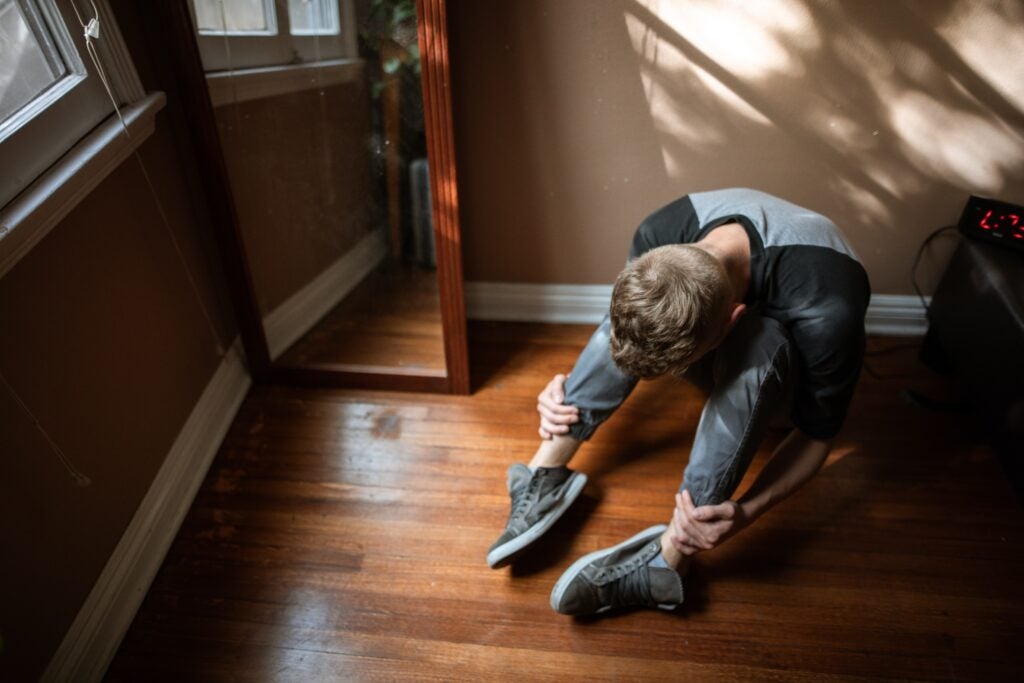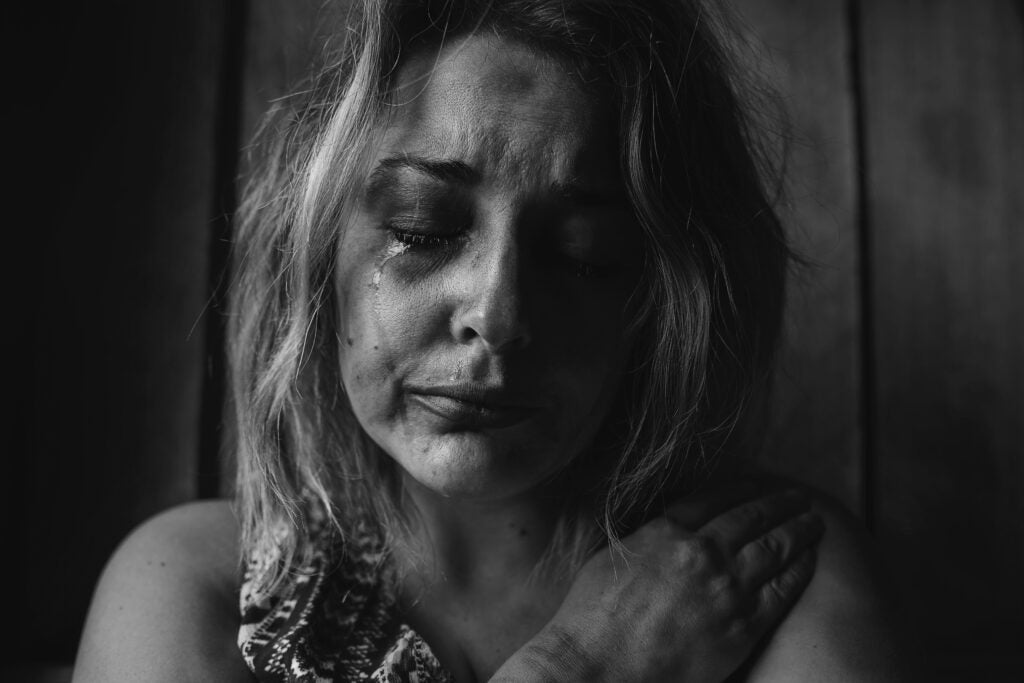
Disclaimer: We acknowledge that there are many different words that individuals use to describe themselves after experiencing sexual assault. In this article we use the term ‘victim’ for the sake of consistency. We acknowledge that there are many different ways of processing sexual violence, and believe each individual person should choose the language that they are most comfortable with.
Table of Contents
What is Domestic Violence?
Domestic violence is characterized as a pattern of behavior that one uses to exert power over an intimate partner in order to control their partner’s behaviors and actions.1 The abuser may use physical, emotional, sexual, or psychological abuse to gain control over their partner. Domestic violence can occur in any relationship, regardless of a person’s race, gender, age, sexual orientation, or religion.1 A relationship may begin normally, but can quickly turn into an abusive relationship that intensifies over time. Domestic abuse is a serious offense, punishable by law.
Dynamics of Abuse

Domestic violence can vary in frequency and severity, and it often leads to a cycle of abuse.2 It may initially begin with negative encounters such as name-calling, isolation, possessiveness, which are often downplayed by the abuser to make these interactions seem inconsequential, or even the victim’s fault. Over time, the abuser will begin to increase their control and intensity of their mistreatment, which may result in physical abuse that causes serious harm. The cycle of domestic abuse occurs in three phases:2
- Tension Building Phase
- Explosion Phase
- Honeymoon phase
Tension Building Phase
The Tension Building Phase is typically the longest phase. It is characterized by minor conflicts, emotional abuse, and a sense of growing tension between the abuser and the victim. Victims often describe this tension as “walking on egg-shells.”2 They sometimes try to avoid the violence and deny that a problem is growing.
Explosion Phase
The Explosion Phase is when the actual abuse takes place. All of the growing tension reaches a climax and the abuser lashes out at their victim by using physical, sexual, psychological, and/or emotional abuse.
Honeymoon Phase
The Honeymoon Phase occurs shortly after the Explosion Phase. During this phase, the abuser will typically apologize profusely for their normal actions in order to regain the trust of their partner. They may even buy the victims gifts, such as flowers. The abuser will make promises to avoid violent in the future and will attempt to reestablish trust by using romantic gestures. Once the victim is appeased, these romantic gestures will eventually subside and tension will start to reemerge, causing the relationship to reenter the Tension Building Phase, initiating the harmful cycle yet again.
Denial
Denial is what perpetuates the cycle of abuse.1 The abuser may try to deny the seriousness of the incident, and the victim may deny that the event took place or try to marginalize the abuse. Often times a victim will hide their injuries or make up a false explanation for the injury. In order to end the cycle, the victim must acknowledge the harmful nature of the abuse and seek a reliable source of help.

Signs of an Abusive Partner
Anyone can be an abuser and anyone can become a victim, regardless of age, gender, class, race, or sexual orientation. However, many abusers often display similar personality traits such as those listed below:1
- Abusers may deny the seriousness of their abuse.
- Abusers may treat their victim as their own personal property.
- Abusers may be seen as nice people to outsiders in between bouts of private acts of abuse.
- Abusers may blame outside forces for their behaviors, like stress.
- Abusers may be possessive, have extreme jealousy, be unpredictable, and have a bad temper.
- Abusers may demean, humiliate, or embarrass their victim.
- Abusers may attempt to control what their victim wears, does and says.
- Abusers may accuse their victims of having an affair.
Domestic Abuse Statistics
Domestic abuse is much more common than many would assume. It typically occurs behind closed doors and is not publicized, therefore creating the illusion that it only happens on rare occasions. Although women are more commonly victims of domestic abuse, there is still a significant number of men who become victims of domestic abuse each year. Below are a few important statistics regarding domestic abuse:3

- Each minute, approximately 20 people become victims of physical domestic abuse by an intimate partner.
- About 1 in 3 women and 1 in 4 men will become victims of domestic abuse at some point in their lifetime.
- 1 in 7 women and 1 in 18 men have been stalked by their own partner to the point of fearing for their life.
- Approximately 15% of all violent crimes are due to some form of domestic violence.
- Only 33% of victims seek medical help for their injuries.
- Domestic violence is most common among people ages 18-24.
Why Some Victims Choose to Stay with their Abuser
In many cases, the victim reports feeling incapable of escaping or unwilling to leave their abuser. Sometimes their abusers will go to great lengths to keep them from leaving, such as using physical threats, apologizing profusely, or making the victim feel as though the abuse was their own fault. In other cases, victims choose to stay with their abuser due to financial dependency, children, unsupportive families and friends, religious beliefs, lack of knowledge, or more.1 It is important for victims to know their options so they can make the safest decision when choosing to stay with or leave their abuser.
How to Get Help
If you think that you or someone you know is a victim of domestic abuse, it is important to seek help early on. Having a close family member or friend you trust and can confide in is often a very vital and helpful resource. It is also important to plan ahead in case your partner’s violence escalates so that you can protect yourself in a crisis. Creating a Personalized Safety Plan can help organize your response if an incident occurs, because it may be hard to organize your thoughts and think rationally during a crisis.3 The Personalized Safety Plan lays out the details of your plans such as who you will confide in, where you will go, and any helpful phone numbers of local domestic violence resources. Sharing this plan with your confidante may also be helpful during bouts of abuse or a crisis.

Resources
Many shelters, hot lines, and businesses are dedicated to helping victims of domestic abuse. Do not hesitate to contact one if you believe that you or a loved one is a victim of domestic abuse. Below is a list of hot lines and crisis centers that may be helpful for a person experiencing domestic abuse:1
- Domestic Violence Hotline: 0808-2000-247
- National Domestic Violence Hotline: 1-800-799-7233
- National Dating Abuse Hotline: 1-866-331-9474
- http://www.thehotline.org/resources/victims-and-survivors/
- (International) http://www.hotpeachpages.net/
Concluding Remarks
Domestic violence occurs in many relationships around the world and in all types of relationship. It is far more common than one would expect due to the intimate space in which it occurs. The abuser may continue to exert power over their victim until they control every aspect of the victim’s life. The cycle of domestic abuse can continue indefinitely or end tragically if the victim does not seek help. Thankfully, there are many resources and support systems available for those who are in need of help.
References
- “What Is Domestic Violence?” What Is Domestic Violence? N.p., n.d. Web. 16 Jan. 2017.
- Thawley, John. “Cycle Of Violence – Domestic Violence.” Introduction – Domestic Violence. N.p., n.d. Web. 16 Jan. 2017.
- “Statistics.” Statistics. N.p., n.d. Web. 16 Jan. 2017.
Last Updated: 24 January 2017.
